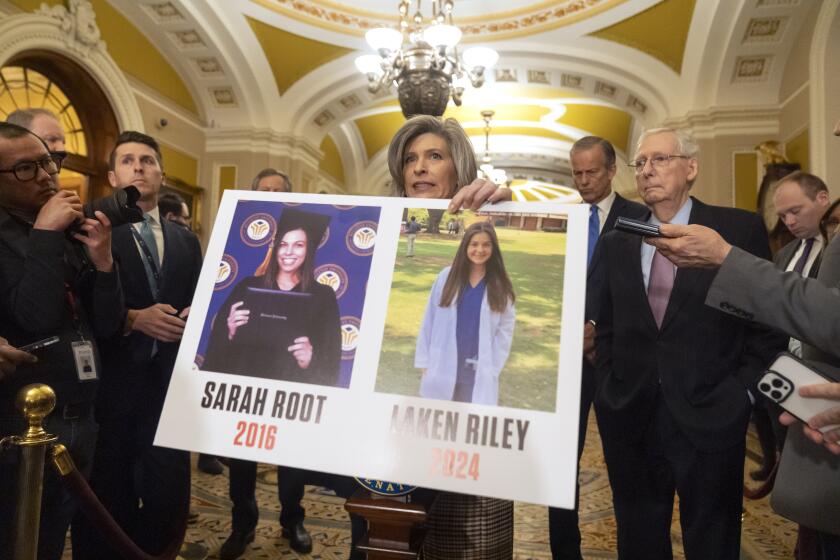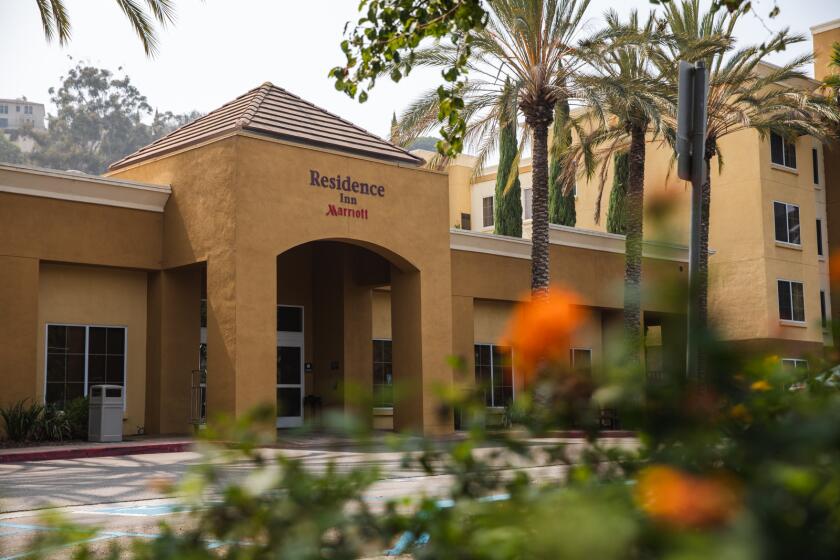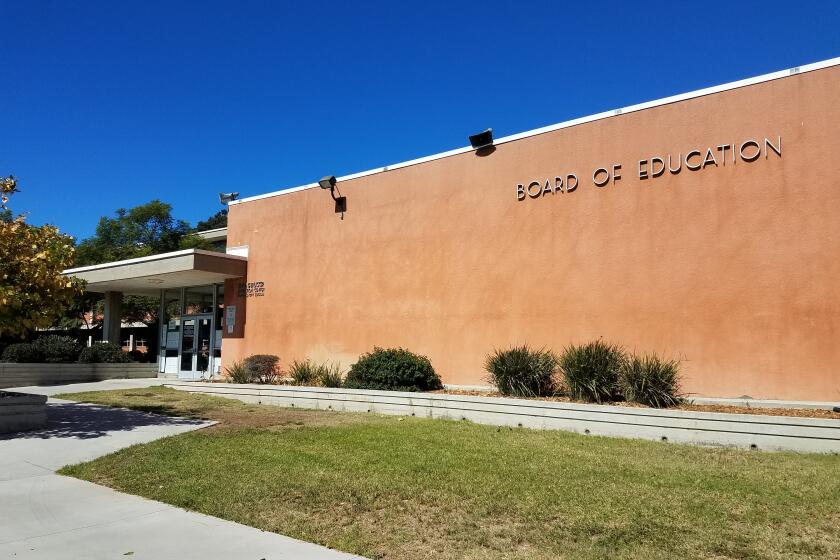Opinion: Your Say on how San Diego should handle gentrification

As more homes are wedged in and prices rise, communities will change.
Let residents choose their own course
Gentrification can be a good thing if it improves the health and safety of neighborhoods. But the main problem with urban gentrification is that it often causes displacement of the original neighborhood residents and makes them worse off instead.
Is this a way to encourage space exploration or a waste of precious resources?
In the U.S., poor people to some extent, and racial and ethnic minorities to a significant extent, often live in areas that are bad for their health. Of real importance is the layering of many different health-harming pollutants in minority communities. A related problem is the lack of health-improving amenities such as green spaces for exercise and stress reduction, or sources of healthy food. Other problems include poor-quality housing stock and crime.
We should all want to make neighborhoods healthier for their residents. But cleaning up problems can also make a neighborhood more desirable and encourage richer residents to move in — leading to gentrification and harmful displacement of the original residents. This is because gentrification tends to come with a number of other changes, including improvements in housing, and increases in amenities and more popular types of amenities, leading to higher housing prices — forces that often drive out the original residents.
What causes a neighborhood to income-gentrify varies, with very different outcomes. First, positive gentrification can occur because the residents living there started out poor but themselves moved into the middle class. A second, less positive way that income gentrification can occur is through residential spillover from richer neighborhoods, especially in tight housing markets. A third way can be through the intentional efforts of government or business via “economic development.”
Unfortunately, the second and third ways tend to create displacement of the original residents, with rising housing prices forcing them to move away. This often means they have to move to a worse neighborhood, and moving may also damage social ties that are even more important for poor people than for more well-off people.
We want neighborhoods to improve so that people’s lives improve, but if neighborhoods improve too much the people we want to help are forced out. So what is the solution? We need to listen to current residents and also emphasize the “just green enough” strategy.
First, don’t let government and developers decide what will make a neighborhood better, aiming toward things the more-affluent dominant culture wants; let the residents of each neighborhood decide what improvements they most want. Then, add amenities and green space in less upscale ways so that the changes are less likely to attract enough richer folks to cause significant displacement. This method requires a balancing act, but holds out the real possibility of making lives better for poor and minority communities.
Heather E. Campbell, Ph.D., is a professor at Claremont Graduate University who graduated from Mission Bay High School, earned her bachelor’s degree from UC San Diego, and often visits her parents in Pacific Beach.
Allow for change to take effect gradually
Change can be good or bad depending on how it is managed. Many people fear change because they are more comfortable clinging to the way things are, while others look forward to the improvements that change will bring. We saw that recently in Oceanside when the Planning Commission and the City Council approved the North River Farms development, and then the citizens of Oceanside voted to overturn that decision.
I’m sure that 110 years ago, as motorized carriages became more popular and roads were constructed to smooth the ride, there were many people who wanted to keep the livery stables and the saddlery shops because to lose them would mean losing the character of their town. Those same people probably complained ferociously as those new roads brought more traffic and more people to their towns. And yet we seem to have found ways to deal with that growth over time.
We claim to offer the “American Dream” to all of our citizens, but we often find it difficult to give people the opportunity to pursue their dreams because it might mean our lives will change.
The harm in gentrification most often falls to those who do not own their accommodations. From the store proprietor who leases store space to the renter who lives in an “apartment home” community, the owners of their property call the shots when it comes to making improvements. For as long as I can remember, those who do not own property come out on the short end of the stick.
It’s relatively simple to protect the rights of those who would fall victim to gentrification. For example, a city could change its laws so that owners that choose to rent their space, whether residential or commercial, would be responsible for ensuring that appropriate considerations are given to those who rent. When owners wish to upgrade their property, those who currently rent that space must be given an alternative space in close proximity at the same rate during construction, and must rent the upgraded space at the same rate for a minimum of five years so that the renter has time to make appropriate adjustments.
Do you think such an idea is outrageous because it puts too much of a burden on the owner? Well, I would remind you that the owner who chooses to rent a space should be a responsible partner who treats the renter with respect. When new laws are enacted that change the burden of a constituency, those laws are often enacted with a clause that says they won’t take effect for several years, thereby giving those who will carry the burden of that change time to adjust to their new situation. Shouldn’t we require property owners to be just as fair when it comes to those who rent?
Gentrification, like many other things in our society, is always about the money. Perhaps we, as a society, could become as respectful to those who rent as we are to those who own.
Keith Retzack, Oceanside
Communities must embrace the future
The cultural aspects of a community are fleeting. The most important reason an area retains a cultural flavor is simply economics. While hidden structural racism has played a part in the past, that may not have the same impact today. The cost of housing is the most important issue today.
The other issues are where to construct housing and how to construct housing. As to the where, that issue is now somewhat predetermined. Housing can no longer expand beyond current locations because the danger of fire has increased to the point that insurance cannot be obtained at normal scales. The how starts with the single-story ranch-style single-family home. That style is now obsolete in San Diego County. The most practical way to accommodate more people and people of low income is high-rise buildings. And I think 40 percent of those homes need to be subsidized.
Infrastructure is still woefully behind the need in San Diego County. Mass transit, electric vehicle stations and fully completed highway systems need to be started and finished in short order. The days of places like Chula Vista creating wide avenues without public transportation are gone. Things that improve the quality of life are creating many more bridges over highways for pedestrians, bicyclists and rest areas for the communities impacted by urban sprawl and widening of freeways and boulevards.
Access to the internet and improving reliable connections will improve business as well as providing greater opportunities for low-income families. Access to and affordability of health care are two priorities that are determinants of a better quality of life for all.
Basically, we simply cannot continue to do things as we have always done before. The limitations are right at our front doors. We do not have enough water.
John H. Borja, Chula Vista
We should not stand in way of progress
You can untwist a pretzel and you can search for common interests among pro- and anti-Trump folks much easier than you can sensibly resolve the gentrification situation.
It has always been understood that there is great merit in taking care of your surroundings. Thankfully most people seek to maintain their property, even improve it within their ability to do so. But lo and behold, it seems that an accumulation of this behavior can also be regarded as an attempt to displace residents because of a natural phenomenon: Upkeep tends to increase property values.
When the public sector wants to invest in an area, it is called revitalization. Successful revitalization leads to the idea of “gentrification.” Two similar neighborhoods, one maintained, the other not, will lead to one of them eventually benefiting from all that public investment and resident elbow grease through an increase in value. Guess which one. Is this a bad thing? Does it need attention?
In the past, redlining was a proactive practice of banks deliberately failing to lend money in certain neighborhoods, a discriminatory action. It seems that we are headed toward another interpretation of redlining. Identify those affordable places, draw a red line around them, label them off limits for reinvestment funding and preserve their “affordability” by simply neglecting them. That ought to do it.
Make sense? I don’t think so either. How about just letting go of the misuse of the gentrification concept by recognizing that we all want nicer neighborhoods and there is nothing wrong with that. We should strive for healthy communities that contain various income levels. Displacement is a bad thing, but fixing neighborhoods isn’t.
Gary Weber, Normal Heights
It’s the people that make a community
One of San Diego’s biggest attractions is its active community and the people who make this fast-paced city into what it is today. Since San Diego does attract many people, the population size has increased significantly throughout these past few years. Ever since COVID-19 became a part of our lives, people have had an urge to find a place and make it there’s, especially in a nice area with great weather and fun destinations like San Diego. But, with this expansion of residents comes a lot of concern about space and the amount of available housing. Of course large apartment complexes are the easy way out, but it is important to keep each area of San Diego true to its community and ensure that it doesn’t become too industrialized.
San Diego has so many different areas including La Jolla, Birdrock, Pacific Beach, North Park, Downtown and so many more. So, when discussing housing expansion, each looks very different in each of those areas. The first people to confide in before making a big renovation or adding more housing are the local residents that have been living there for years before. Though all of these areas are very different, they still have one key aspect of living that is important to everybody which is privacy. Sufficient privacy can look different to many people, like planting tall plants in front yards, building fences around buildings, inserting cameras and video monitor systems, as well as creating a private coded fence to protect a community. Each person has their own preferences that make them feel safe and protected, but it is important for each community to ensure that all residents feel as though they have privacy in their own homes.
Another important aspect of living that is important when renovating and expanding living situations is that each area of San Diego is truly unique. Like I listed before, San Diego has so many different communities of people which gives it its charm and excitement. Take Ocean Beach and North Park for example: Ocean Beach has a very relaxed, and bohemian vibe to it which attracts lots of surfers, whereas North Park is very trendy and is home to a lot of young professionals and college students. Housing expansion is going to look a lot different in each of these areas, since people who live in each of these parts of the city have very different standards of living.
People in Ocean Beach are probably going to prefer a slower-paced life with less buildings and smaller boutique areas and homes with good living space in a fun social community. People who live in North Park tend to gear more towards the city life and don’t mind larger apartment buildings, and like the modern style homes and lifestyle. This is why it’s important to keep the vibes and culture of each community unique to them in order to uphold the life that San Diego attracts so many people to originally.
Cella Hussussian, Pacific Beach
Get Essential San Diego, weekday mornings
Get top headlines from the Union-Tribune in your inbox weekday mornings, including top news, local, sports, business, entertainment and opinion.
You may occasionally receive promotional content from the San Diego Union-Tribune.

